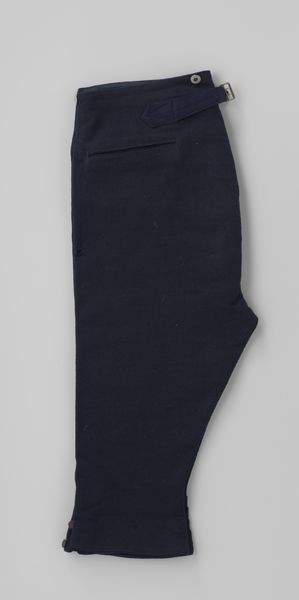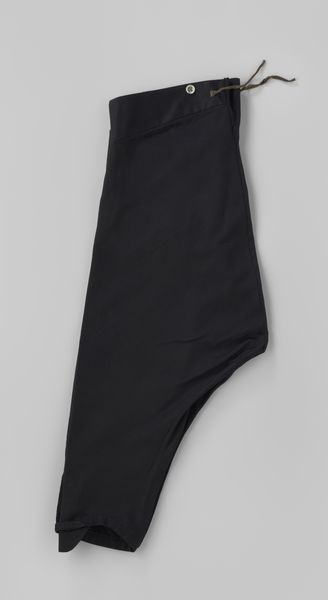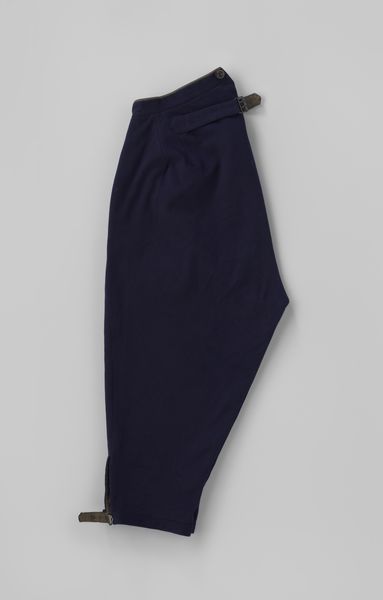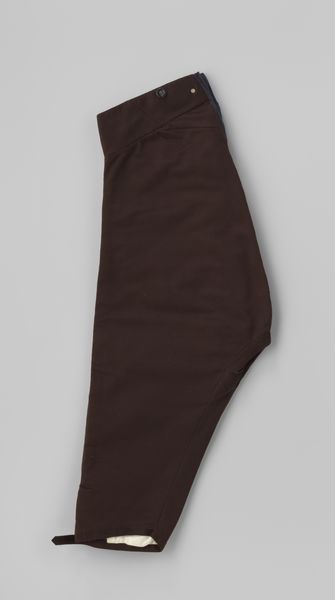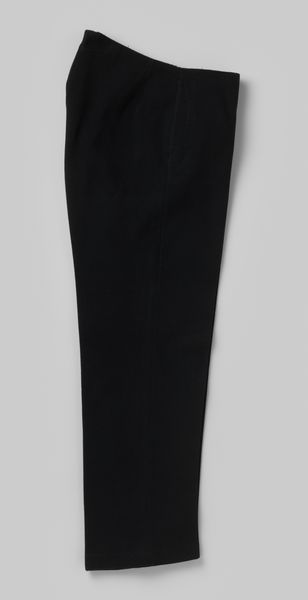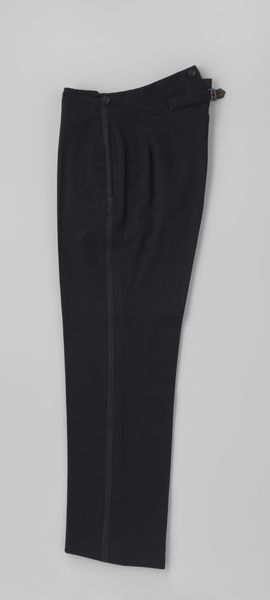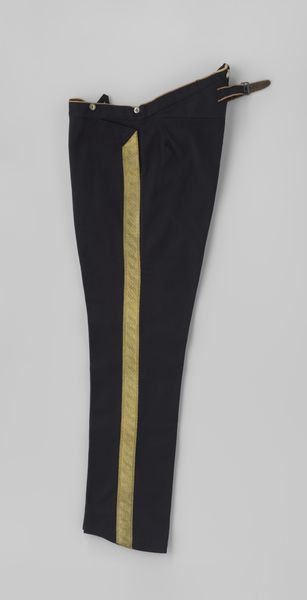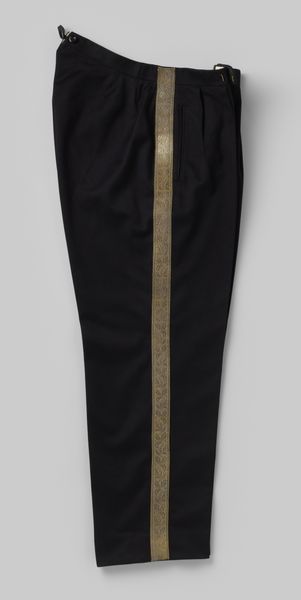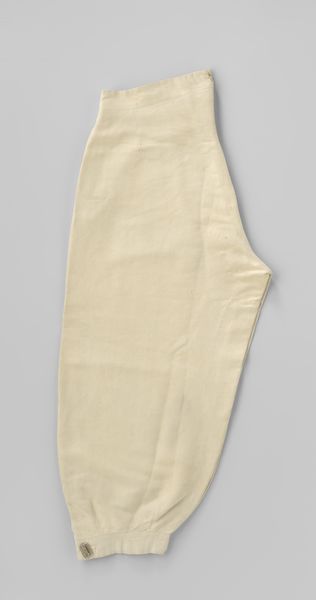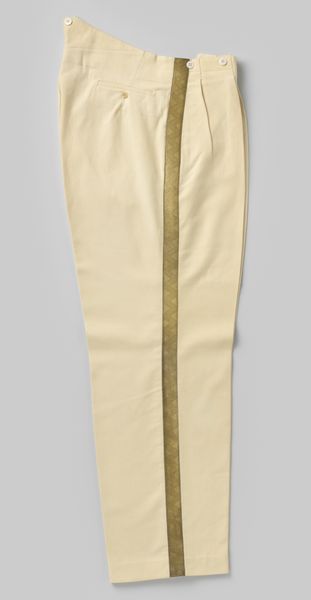
Poffende kuitbroek van zwart laken, met tailleband, hogere rug, gulp met blindsluiting, twee schuine zakken, één klepzak en vanachter banden met gesp; onderdeel chauffeurspak c. 1910 - 1925
0:00
0:00
photography
#
still-life-photography
#
fashion mockup
#
product fashion photography
#
fashion merchandise
#
clothing promotion photography
#
photography
#
clothing photography
#
clothing theme
#
sportswear sale photography
#
photography of branded tshirt
#
clothing photo
#
clothing design
Copyright: Rijks Museum: Open Domain
Editor: We're looking at a photograph titled "Poffende kuitbroek van zwart laken..." from around 1910-1925. It depicts a pair of black breeches, likely part of a chauffeur's suit. I'm struck by how much the shape almost looks like a sculptural form. What are your initial thoughts on this piece? Curator: It's the stark simplicity that draws me in. Stripped of any context beyond the pale background, we're forced to consider its pure form. Note the dramatic curve of the hip and thigh, how it contrasts with the severe angle of the lower leg. The fabric, its texture and how light catches upon it, serves a vital purpose in articulating the composition. Editor: So you're saying it’s less about the *use* of the garment and more about how it presents as an object? Curator: Precisely. The photograph isolates the trousers, removing their functionality. They become an exercise in line and form. Consider the way the fastening at the waist anchors the composition, acting as a counterpoint to the flared silhouette. The craftsman, too, should be considered as having consciously constructed something to both cover and display. Editor: That makes me see the photograph in a new light. It's about appreciating the intentional arrangement of shapes and the textural quality of the cloth. Are there other photographs you find compelling that deploy a similar method? Curator: The tradition of still life painting holds the most parallel to this image. Consider, for instance, Pieter Claesz's Vanitas still life where commonplace items represent larger existential ideas; here too, clothing as medium embodies a broader notion. This photograph achieves its own type of still life, drawing out the haptic, artistic experience, the qualities of shadow and tone as indicators of material being. Editor: Fascinating. I was initially seeing this as simply a picture of some old pants. I now see that the composition allows it to exist almost as a modernist study in form and material. Curator: Indeed. It’s about engaging with what *is* there rather than projecting narratives onto the object. That, ultimately, provides for an aesthetic encounter to behold.
Comments
No comments
Be the first to comment and join the conversation on the ultimate creative platform.
